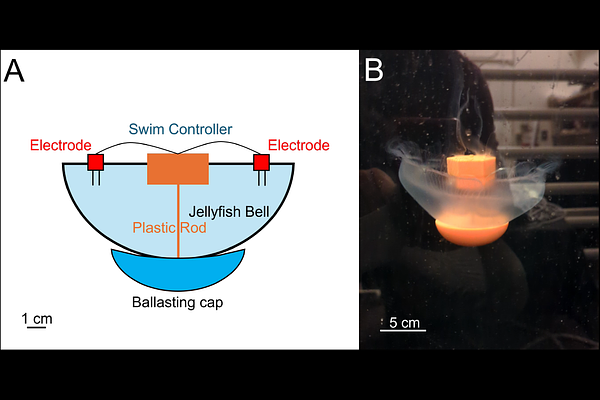Non-invasive measurement of metabolic rates of free-swimming jellyfish using volumetric laser scanning

Non-invasive measurement of metabolic rates of free-swimming jellyfish using volumetric laser scanning
Dabiri, J. O.; Anuszczyk, S. R.
AbstractMeasuring energy consumption of marine organisms often requires enclosing the animal in a sealed chamber of similar volume to quantify changes in oxygen concentration of the surrounding water. This method limits measurements of free-swimming organisms without boundary effects or movement restrictions. We present energy consumption measurements of free-swimming jellyfish based on 3D morphological reconstructions of the animal during the process of catabolysis utilizing a non-invasive technique. We used a 6-meter tall, 13,600 liter water tank for swimming experiments without food present in the water column. To study continuous swimming, we implemented an onboard microelectronic swim controller that externally stimulated jellyfish swimming for 50 hours. Computer vision-based feedback control was used to enable continuous swimming against a flow current without encountering the vertical limits of the tank over a distance of 2.55 km or 15,000 body lengths. Using a 3D laser scanning system, we created morphological reconstructions of the jellyfish before, during, and after swimming experiments. Changes in animal volume were converted to energy consumption using the body chemical composition determined with elemental analysis. Free-swimming, electrically stimulated animals were found to consume 2.5 times more energy than similarly stimulated animals in a constrained environment, likely due in part to additional hydrodynamic drag associated with free-swimming. Simplified drag models could not fully account for the increased energy consumption. This highlights the need for hydrodynamic models that more effectively capture these dynamics. These measurements suggest that this technique could be applied more broadly to measuring free-swimming metabolic rates of other gelatinous invertebrates.